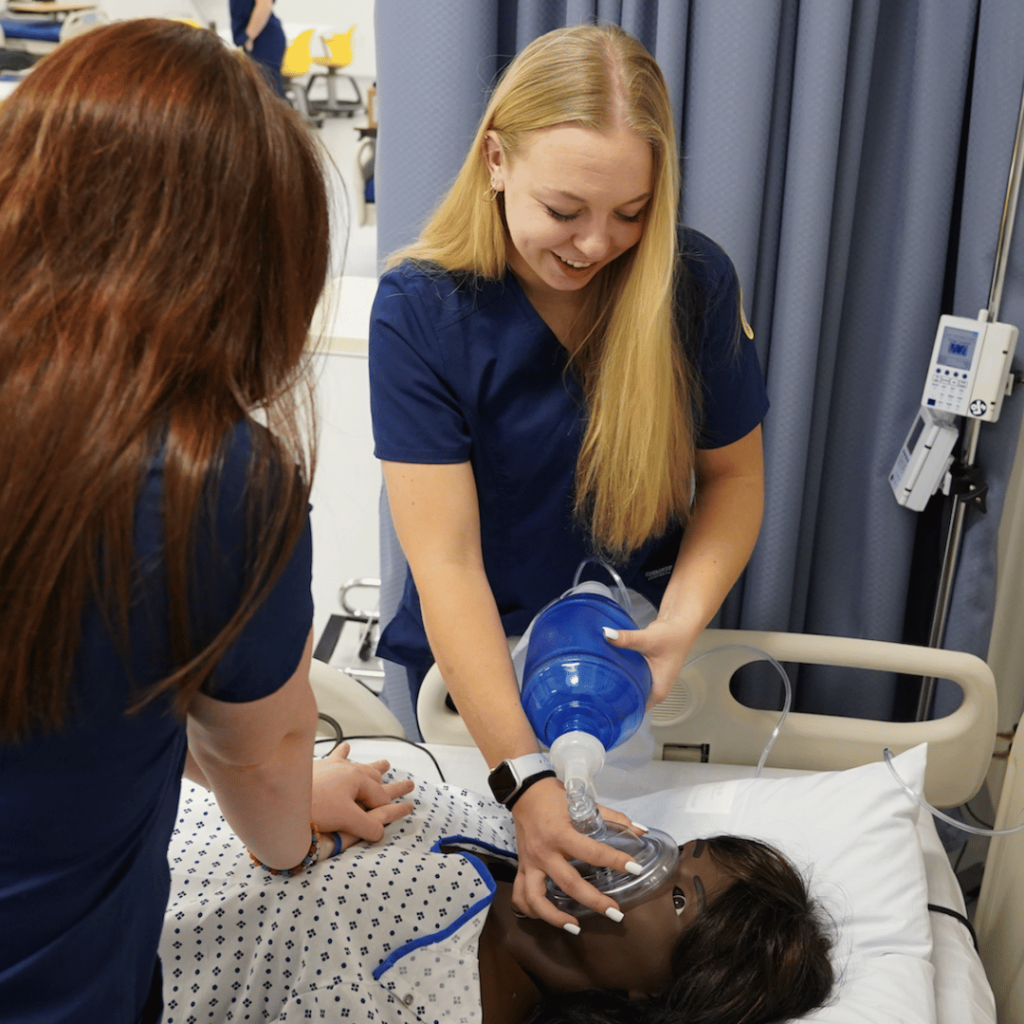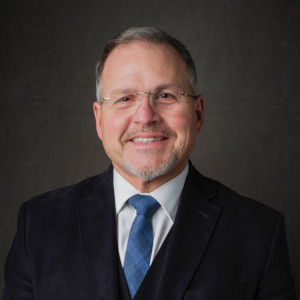Words and Thoughts of President Alan R. Miciak
John Carroll University Plays a Larger Role in Human Health

When news broke that the Albert Einstein College of Medicine in the Bronx had received a $1 billion donation earmarked to cover tuition for all students going forward, it shined a light on two parallel phenomena.
The gift, one of the largest donations to higher education and health in U.S. history, highlights what’s been called, “the great wealth transfer.” Over the next two decades, an estimated $70 trillion will pass from the baby boomer generation to younger generations, the government, and philanthropic causes. Others predict a transfer nearly double that size.
At the same time the recipient, the Albert Einstein College of Medicine, sits within New York City’s poorest borough. It’s natural to place this historic gift within a larger context — a long list of disparities that shape who delivers and receives health care in America, as well as the resulting health outcomes.
Here’s a snapshot. Look to one side of the Harlem River, and you learn that Bronx residents had a pre-Covid life expectancy of 76 years. Shift your view less than five miles to just south of 96th St on the Upper East Side, and you find life expectancies of 85 years.
It’s encouraging to imagine a school such as the Albert Einstein College of Medicine having the resources to address deeply rooted obstacles to health equity. It’s also an occasion to declare unequivocally that healthcare and public health need a reset.
All of us at John Carroll University — in partnership with partner institutions like the Cleveland Clinic, Metro Health, and University Hospitals — have a larger role to play.
NIH Invests in Cleveland’s Health
The kind of discrepancies seen in the New York City boroughs also exist in Cleveland and nearly every American metro. When the U.S. Centers for Disease Control (CDC) compared data in 2015 from Cleveland’s Woodhill neighborhood and the city of Shaker Heights — separated by an easily walkable mile — they found that residents’ average life expectancies differed by 23.2 years.
One year ago, researchers from the Cleveland Clinic and MetroHealth received a $3.14 million National Institutes of Health grant to develop population health models that can pinpoint and track such health discrepancies at the zip code and block level across our region.
“Neighborhood health disparities in Cleveland are severe, among the most severe in the country,” says Jarrod Dalton, Ph.D., Director of Cleveland Clinic’s Center for Populations Health Research and the DTN project’s principal investigator. “This is the biggest problem in population health of our time. It stems from decades of residential segregation and corresponding disinvestment in communities that’s had an impact on people’s health and longevity.”
John Carroll University College of Health: Meeting the A Changing Need
When John Carroll University announced the creation of a new College of Health, we understood the need to blend the social context and global health perspective of a Jesuit, liberal arts education with a far more quantitatively robust skill set required in health and all professions.
Those ingredients have long fueled John Carroll’s Pre-Health program, the traditional path for graduates to pursue medicine, dentistry, veterinary medicine, PT/OT, pharmacy, and other clinical careers. As health professions schools change to meet new needs, we will need to expand and adapt our approaches going forward.
Consider the Carle Illinois College of Medicine, the world’s first engineering-based medical school, which is educating a new generation of physicians at the intersection of engineering, science, and medicine. More than 80 percent of Carle students have backgrounds in engineering, advanced mathematics, computer science, and other quantitative science disciplines. Courses are designed and co-directed by teams that include a basic scientist, a clinician, and an engineer.
This wide-angle view of the future of all work — especially as it relates to health research, innovation and care — should inform John Carroll’s College of Health. Whether we are advancing long standing academic programs (Counseling and Exercise Science) or recently launched programs such as a Bachelor of Science in Nursing and a Masters in Exercise Physiology, we want to graduate asset creators, not simply asset managers.
In Fall 2024, we plan to launch an undergraduate major in Public Health, followed by an undergraduate major in Healthcare Administration and a Master of Science in Nursing in 2025. At every turn, we need to be clear-eyed and determined if we plan to address longstanding disparities across health providers and patient outcomes. Consider these data points.
- Between 73% and 79% of all students entering medical school were raised in homes in the top two household-income quintiles. And only 5% of medical school matriculants come from households in the lowest 20% quintile.
- A 2021 Journal of American Medicine study finds that nearly all of the 10 leading diagnosing and treating occupations are below parity in terms of Black, Hispanic, and Native American representation, with some (Physician Assistants) well below that of others.
- Some 81% of all RNs report being White/Caucasian; 7.2% report being Asian; 6.7 % report being Black/African American, and 5.6% report being Hispanic/Latinx.
We can’t underestimate the resources and will that change will require.
Most medical school applicants’ preparation begins at a young age, with successful applicants having been aided by a combination of early and ongoing resources, quality primary and college education, opportunities, mentoring, role models, financial stability, and academic preparation, among other factors.
High-income U.S. households spend $8,000 per year more on education and enrichment than low-income households, a gap that’s nearly tripled since the 1970s. This adds up to a $100,000 spending gap throughout a child’s early childhood, primary and secondary school career.
Support will be needed at every step along the journey for John Carroll to create meaningful and lasting change.
Health Innovation is Teamwork
It’s safe to predict that future innovations in health will emerge from a convergence of human and computer collaboration.
While many people around the world were tuning in for the annual Oscars presentations, I was reading about Breakthrough Prize Foundation’s 2024 LAUREATES, recognized for progress in the understanding and treatment of major diseases, including cancer therapies, Cystic Fibrosis, Parkinson’s Disease, and more.
The Breakthrough Prize – known as the “Oscars of Science” – was created to celebrate the wonders of our scientific age by some of the biggest names in Silicon Valley technology: Sergey Brin, Priscilla Chan and Mark Zuckerberg, Julia and Yuri Milner, and Anne Wojcicki. Some $308 million has been awarded to clinical researchers and scholars over the thirteen years of the Breakthrough Prize.
Northeast Ohio has the talent and wherewithal to create similar incentives and to draw the world’s attention to our region as a center of global health innovation.
Aspirations for the College of Health
As we rally the support of partners and donors, we know that there are plenty of opportunities and needs as the College of Health advances a new approach to education and problem-solving.
Our immediate goals include:
-
Address provider shortages, regionally and nationally, especially in nursing, behavioral health, and primary care.
-
Connect the dots between the need for greater diversity and representation at all levels of the health professions, and the elimination of persistent health disparities.
- Invest in the academic, personal, and spiritual formation of a new generation of health leaders, leaving them better equipped to advance systemic change.
We will engage our alumni, including more than 2,000 working as frontline ICU physicians and nurses, hospital administrators, biomedical researchers, and behavioral and public health experts. They challenge us to graduate resilient and adaptable researchers, agents of change, and care providers, and to improve existing care systems and models.
Our successful alumni confirm the value of our Jesuit focus on higher-order thinking — strategic, quantitative, and systems-based — designed to yield fully-reflective professionals, capable of leading their professions and producing an outsized impact on clinical innovation, patient outcomes, and health policy.
Consider the more than 500 JCU alumni who help advance the Cleveland Clinic, one of the world’s most innovative and respected health systems. Our alumni leveraging degrees and interests in psychology, data science, information technology, operations, and supply chain as well as a countless number of science and pre-clinical backgrounds.
Our 500-year-old Jesuit grounding enables us to anchor John Caroll graduates for the challenges and uncertainties of a world driven by human-computer interaction and collaboration. Mihaela van der Schaar, PhD, director of the Cambridge Centre for AI in Medicine at the University of Cambridge in the U.K, describes that challenge concisely. “We need to design and build AI that helps healthcare professionals be better at what they do. The aim should be enabling humans to become better learners and decision-makers.”
Our ability to merge liberal arts and health education produces future clinicians, administrators and researchers who can lead rather than follow in the age of machine learning. Alumni like Megan Berarducci who graduated from John Carroll with a philosophy degree in 2008. She later attended a two-year nursing post-bac program and eventually became a nurse practitioner.
At the peak of the Covid-19 pandemic, she led the Neuroscience Intensive Care Unit at University Hospitals. When asked how a liberal arts education had prepared her for the moment, Megan said: “Philosophy and theology taught me to weed through the facts quickly and find solutions to help save lives. It helps me relate to patients and their families, to guide them through difficult decisions about the care we provide and quality of life they may achieve.”
With your support, we can navigate the future of health and graduate thousands of more alumni like Megan who will understand and uphold the distinction between what is possible, and what is right, and inspire us to pursue what Jesuits call Magis — higher goals for a far greater good.

